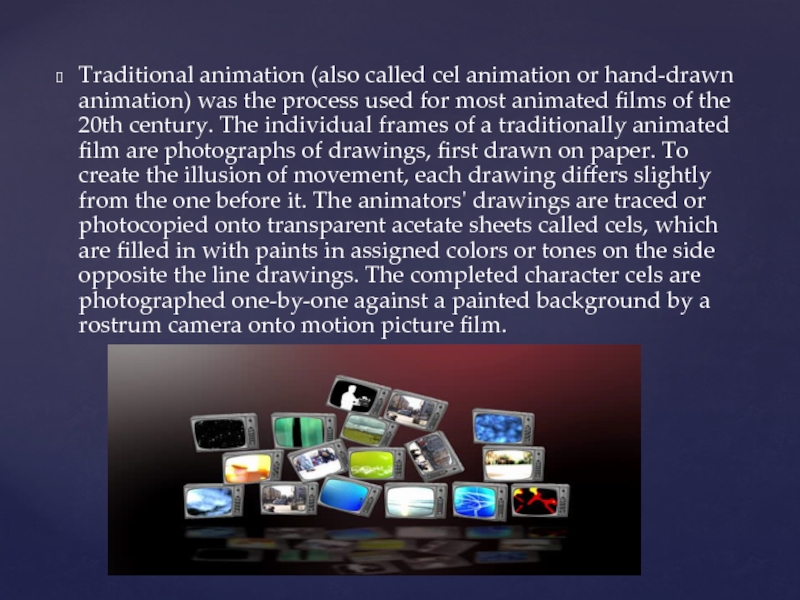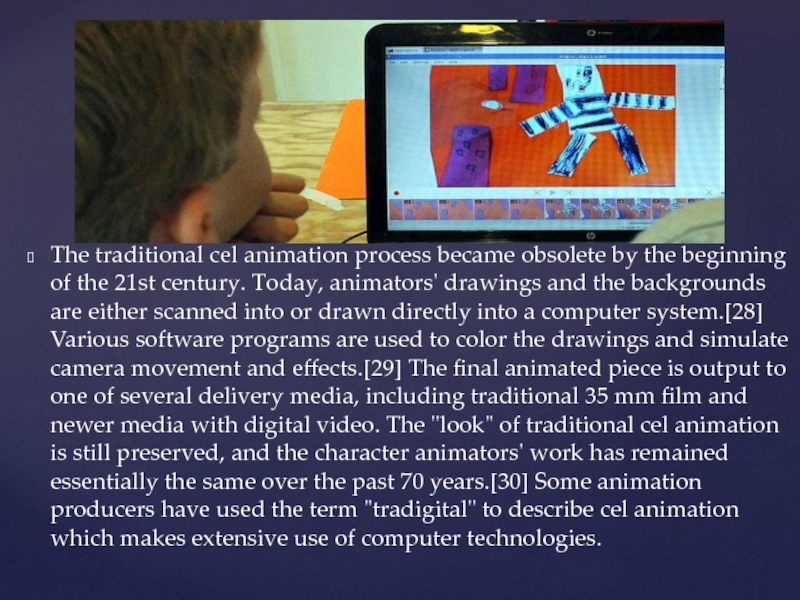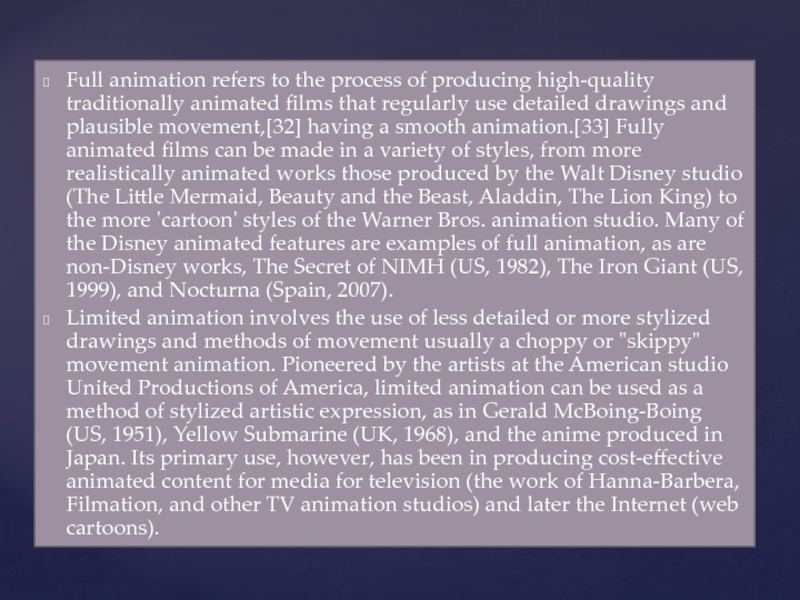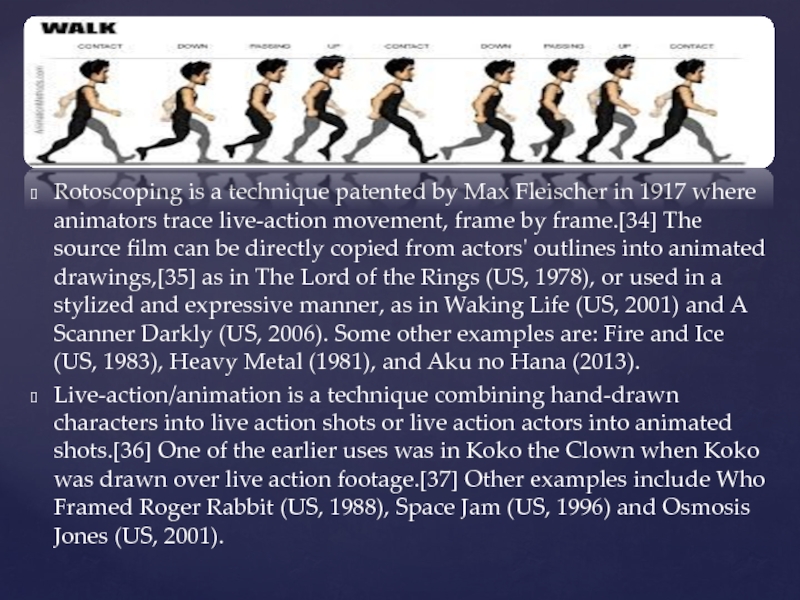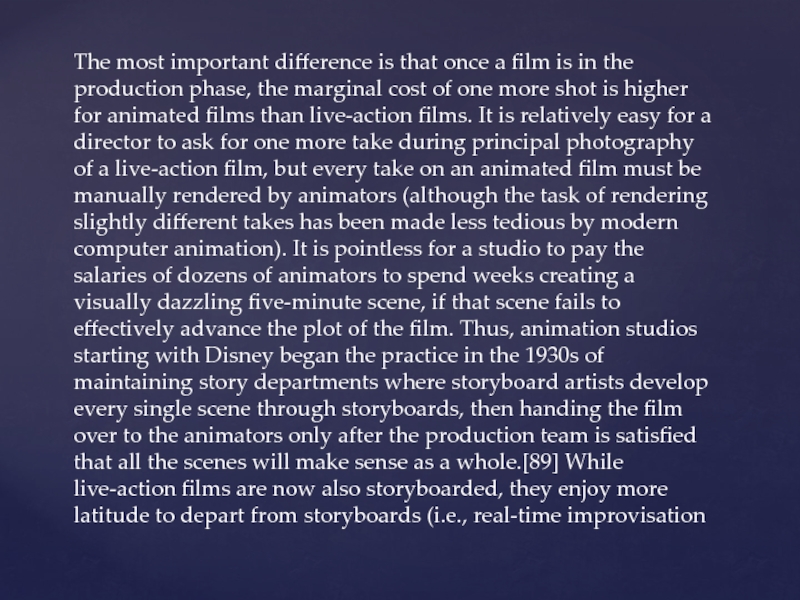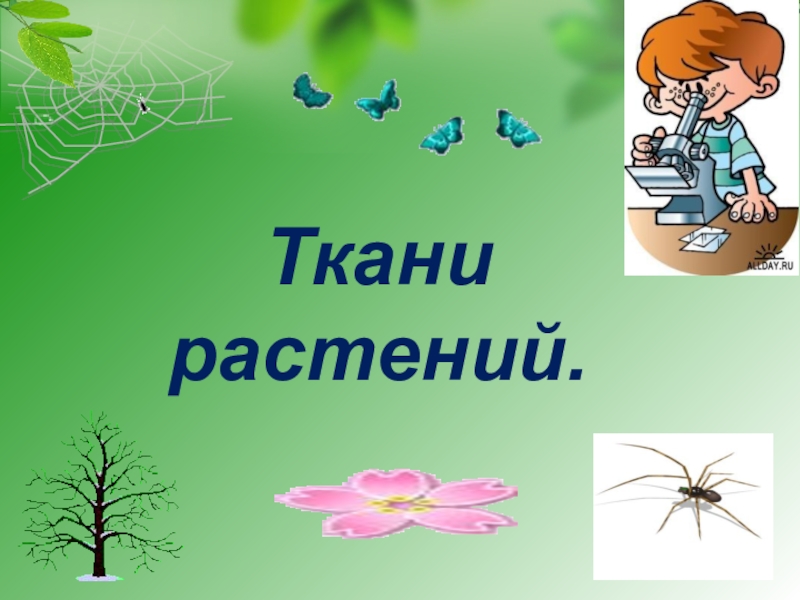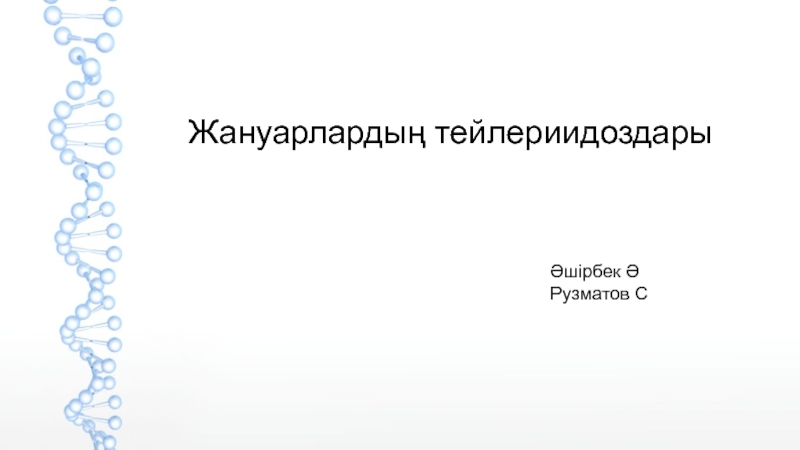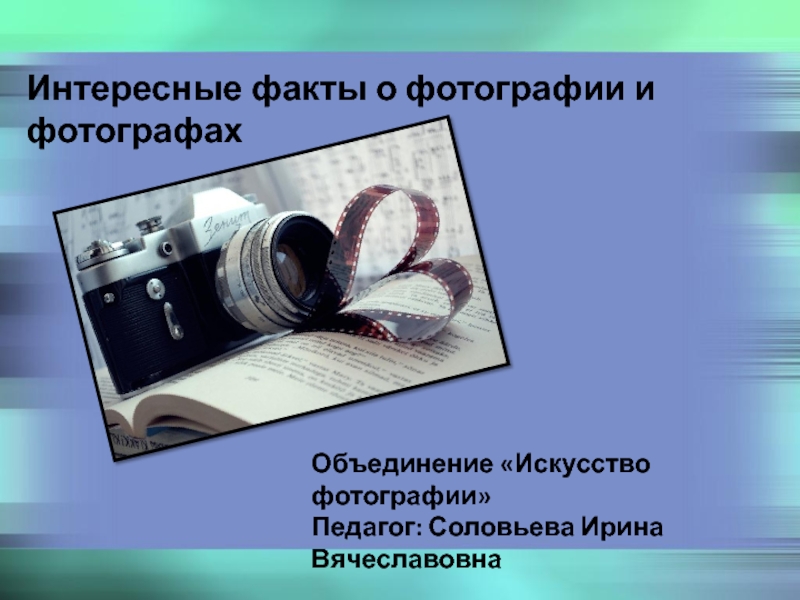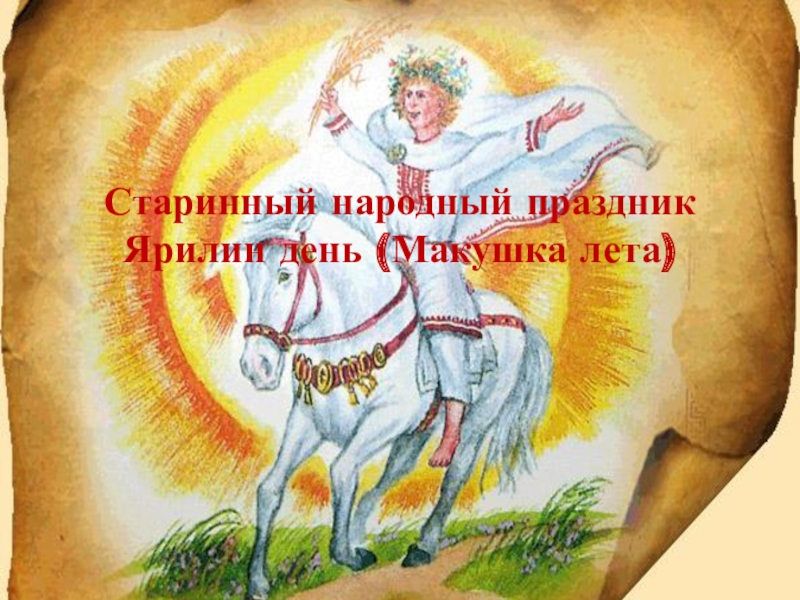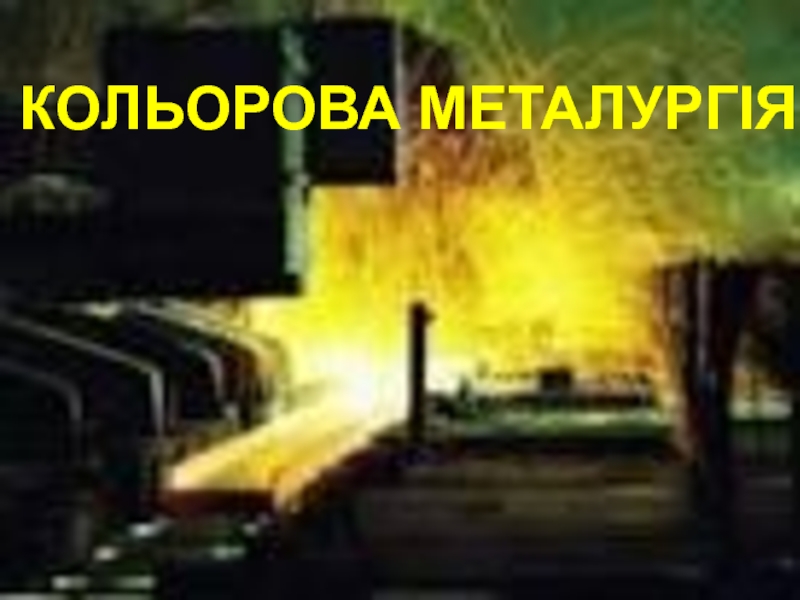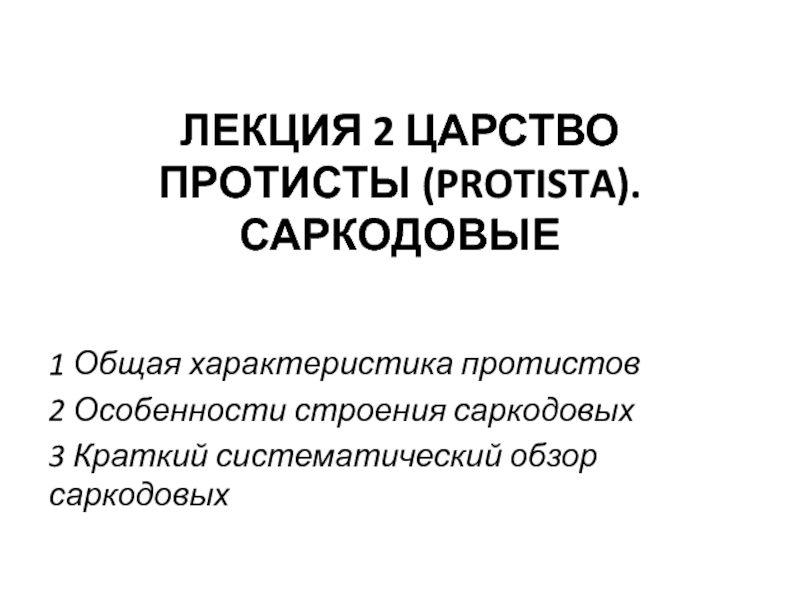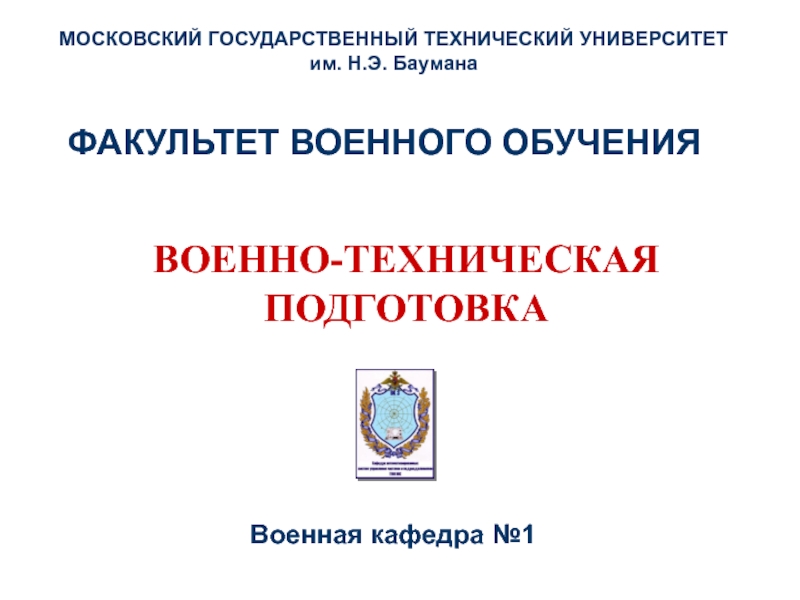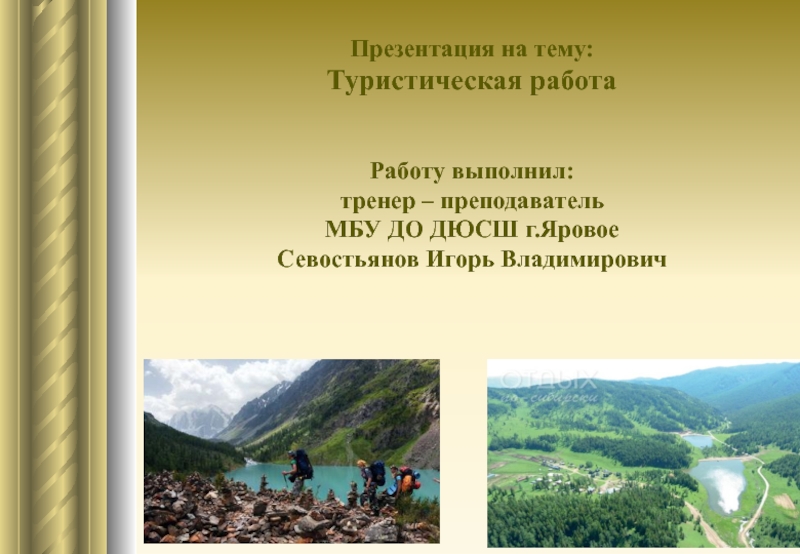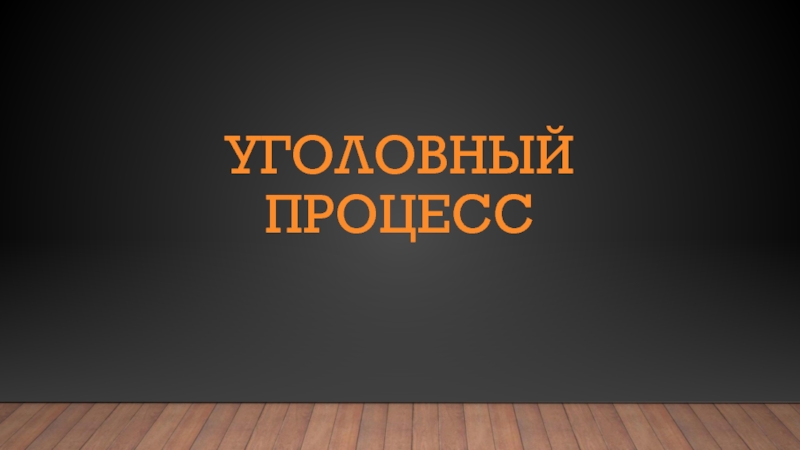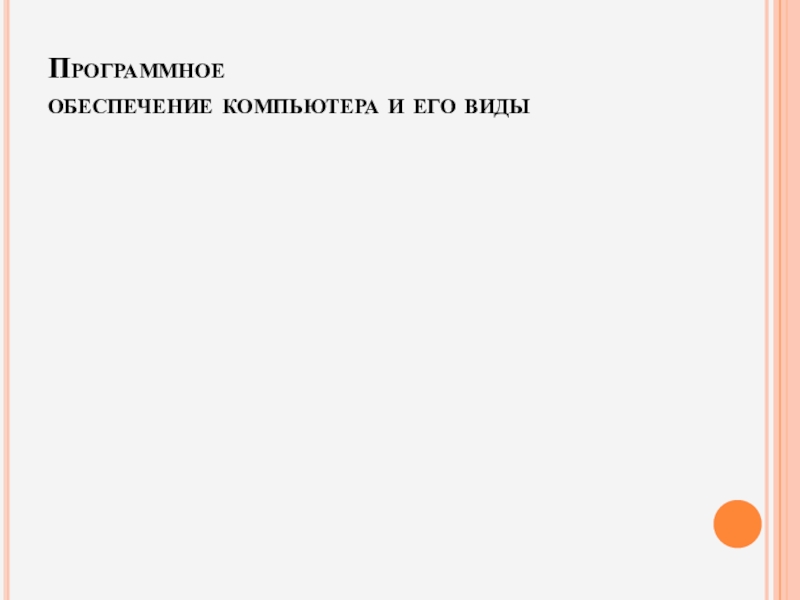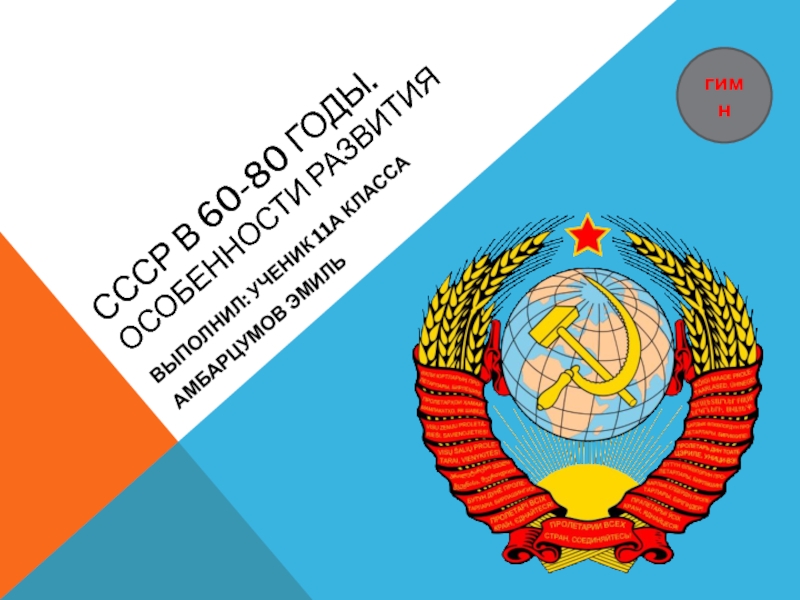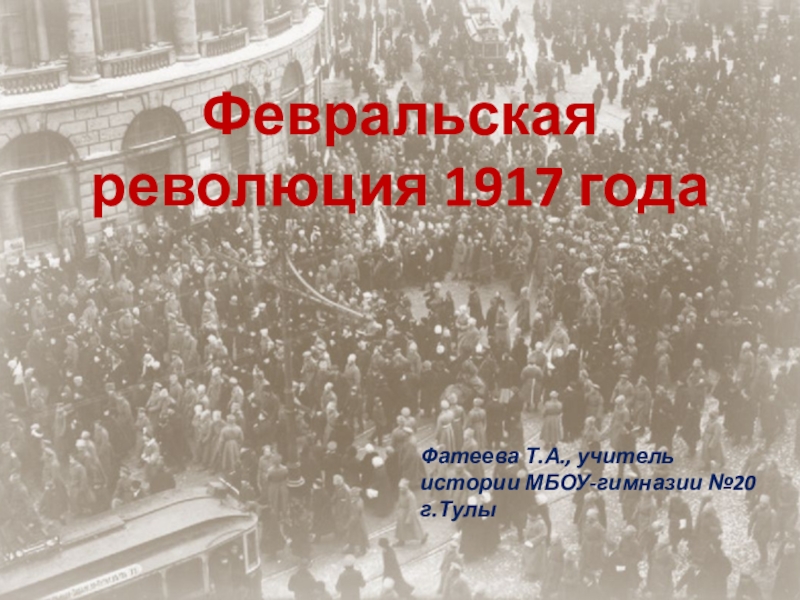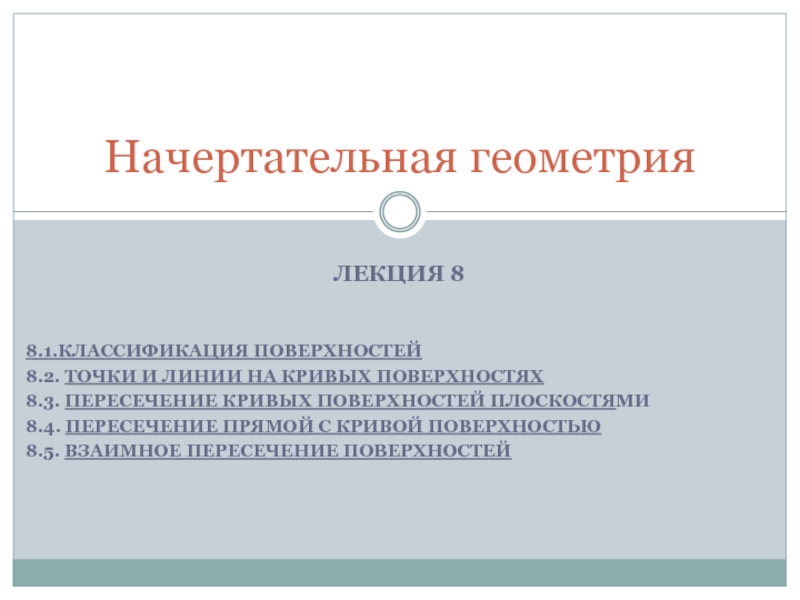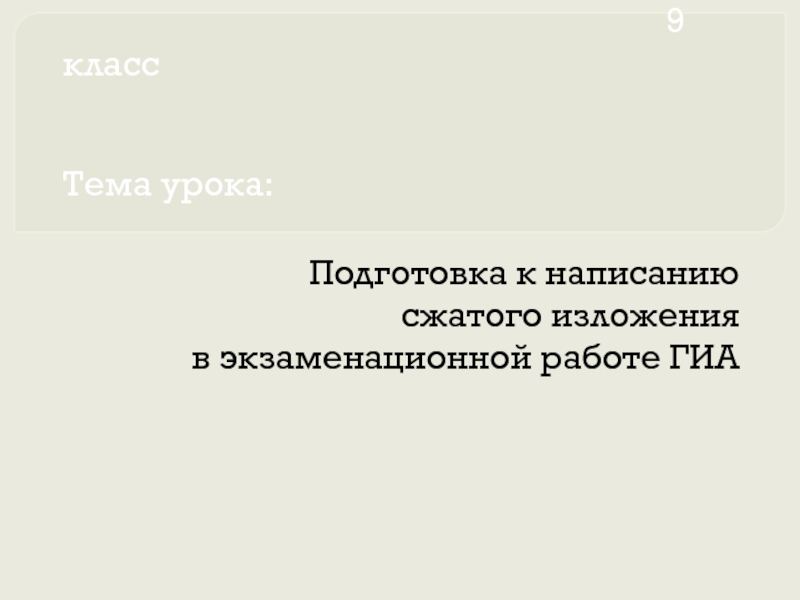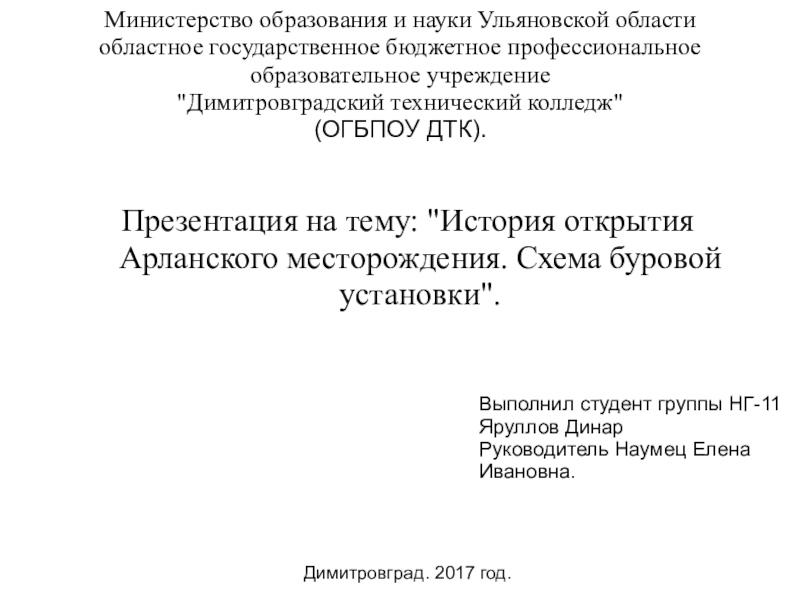Разделы презентаций
- Разное
- Английский язык
- Астрономия
- Алгебра
- Биология
- География
- Геометрия
- Детские презентации
- Информатика
- История
- Литература
- Математика
- Медицина
- Менеджмент
- Музыка
- МХК
- Немецкий язык
- ОБЖ
- Обществознание
- Окружающий мир
- Педагогика
- Русский язык
- Технология
- Физика
- Философия
- Химия
- Шаблоны, картинки для презентаций
- Экология
- Экономика
- Юриспруденция
Theme: Animation in the modern media
Содержание
- 1. Theme: Animation in the modern media
- 2. Introduction
- 3. Animation is the interpolation of frames over
- 4. Animation is the process of making the
- 5. Traditional animation (also called cel animation or
- 6. The traditional cel animation process became obsolete
- 7. Full animation refers to the process of
- 8. Rotoscoping is a technique patented by Max
- 9. The most important difference is that once
- 10. Скачать презентанцию
Introduction
Слайды и текст этой презентации
Слайд 3Animation is the interpolation of frames over a finite period
of time. As a discipline, it is practiced with the
intent of creating an illusion of movement. Animation may also refer to: Animation: An Interdisciplinary Journal, an international peer-reviewed academic journal Animation (album), a 1982 progressive rock album Animation (Cedar Walton album), a 1978 album by jazz keyboardist Cedar Walton Animation (magazine), American monthly publication covering the animation industryСлайд 4Animation is the process of making the illusion of motion
and change[Note 1] by means of the rapid display of
a sequence of static images that minimally differ from each other. The illusion—as in motion pictures in general—is thought to rely on the phi phenomenon. Animators are artists who specialize in the creation of animation.Animation can be recorded with either analogue media, a flip book, motion picture film, video tape, digital media, including formats with animated GIF, Flash animation and digital video. To display animation, a digital camera, computer, or projector are used along with new technologies that are produced.
Animation creation methods include the traditional animation creation method and those involving stop motion animation of two and three-dimensional objects, paper cutouts, puppets and clay figures. Images are displayed in a rapid succession, usually 24, 25, 30, or 60 frames per second.
Animation
Слайд 5Traditional animation (also called cel animation or hand-drawn animation) was
the process used for most animated films of the 20th
century. The individual frames of a traditionally animated film are photographs of drawings, first drawn on paper. To create the illusion of movement, each drawing differs slightly from the one before it. The animators' drawings are traced or photocopied onto transparent acetate sheets called cels, which are filled in with paints in assigned colors or tones on the side opposite the line drawings. The completed character cels are photographed one-by-one against a painted background by a rostrum camera onto motion picture film.Слайд 6The traditional cel animation process became obsolete by the beginning
of the 21st century. Today, animators' drawings and the backgrounds
are either scanned into or drawn directly into a computer system.[28] Various software programs are used to color the drawings and simulate camera movement and effects.[29] The final animated piece is output to one of several delivery media, including traditional 35 mm film and newer media with digital video. The "look" of traditional cel animation is still preserved, and the character animators' work has remained essentially the same over the past 70 years.[30] Some animation producers have used the term "tradigital" to describe cel animation which makes extensive use of computer technologies.Слайд 7Full animation refers to the process of producing high-quality traditionally
animated films that regularly use detailed drawings and plausible movement,[32]
having a smooth animation.[33] Fully animated films can be made in a variety of styles, from more realistically animated works those produced by the Walt Disney studio (The Little Mermaid, Beauty and the Beast, Aladdin, The Lion King) to the more 'cartoon' styles of the Warner Bros. animation studio. Many of the Disney animated features are examples of full animation, as are non-Disney works, The Secret of NIMH (US, 1982), The Iron Giant (US, 1999), and Nocturna (Spain, 2007).Limited animation involves the use of less detailed or more stylized drawings and methods of movement usually a choppy or "skippy" movement animation. Pioneered by the artists at the American studio United Productions of America, limited animation can be used as a method of stylized artistic expression, as in Gerald McBoing-Boing (US, 1951), Yellow Submarine (UK, 1968), and the anime produced in Japan. Its primary use, however, has been in producing cost-effective animated content for media for television (the work of Hanna-Barbera, Filmation, and other TV animation studios) and later the Internet (web cartoons).
Слайд 8Rotoscoping is a technique patented by Max Fleischer in 1917
where animators trace live-action movement, frame by frame.[34] The source
film can be directly copied from actors' outlines into animated drawings,[35] as in The Lord of the Rings (US, 1978), or used in a stylized and expressive manner, as in Waking Life (US, 2001) and A Scanner Darkly (US, 2006). Some other examples are: Fire and Ice (US, 1983), Heavy Metal (1981), and Aku no Hana (2013).Live-action/animation is a technique combining hand-drawn characters into live action shots or live action actors into animated shots.[36] One of the earlier uses was in Koko the Clown when Koko was drawn over live action footage.[37] Other examples include Who Framed Roger Rabbit (US, 1988), Space Jam (US, 1996) and Osmosis Jones (US, 2001).
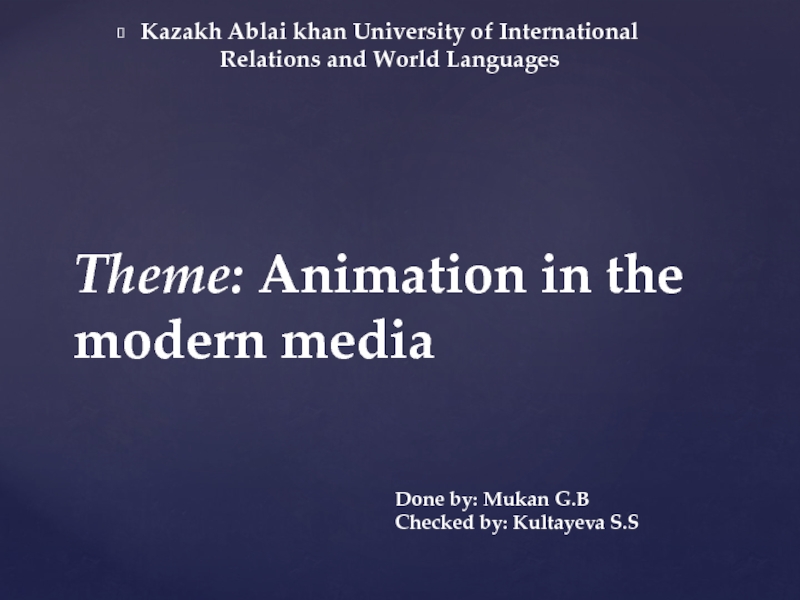
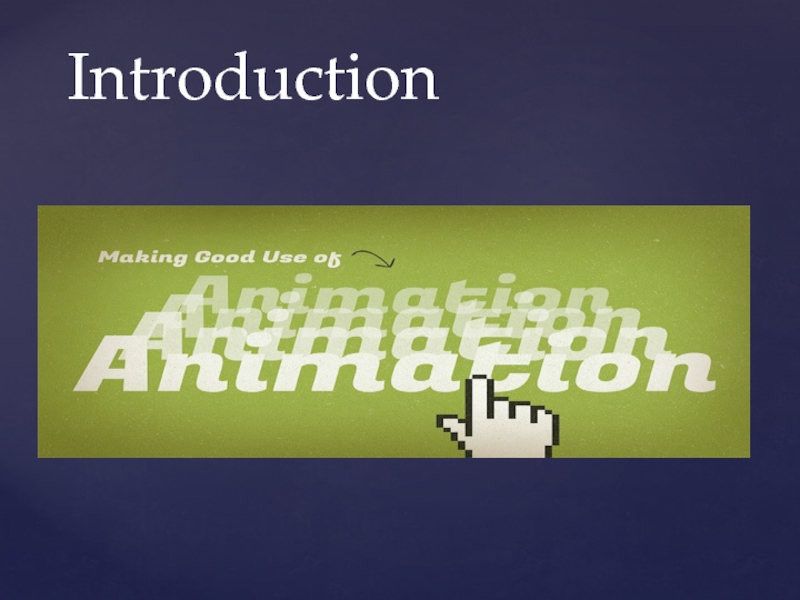
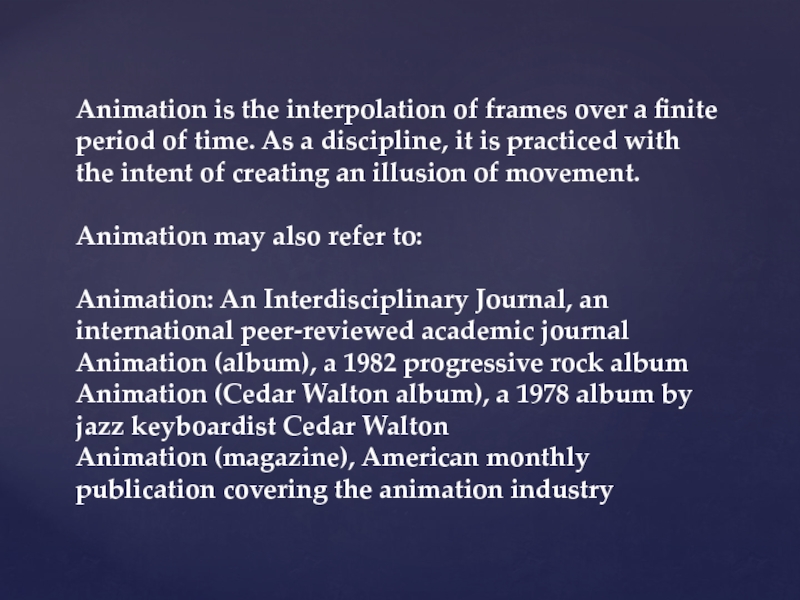
![Theme: Animation in the modern media Animation is the process of making the illusion of motion and Animation is the process of making the illusion of motion and change[Note 1] by means of the](/img/tmb/3/294718/2dc2450d9ca575331e1921a624f4c182-800x.jpg)
